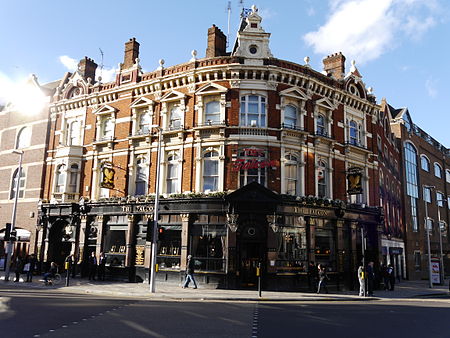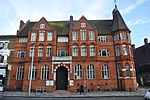The Falcon, Battersea
19th-century architecture in the United KingdomBuildings and structures completed in the 19th centuryBuildings and structures in BatterseaGrade II listed buildings in the London Borough of WandsworthGrade II listed pubs in London ... and 2 more
National Inventory PubsPubs in the London Borough of Wandsworth

The Falcon is a Grade II listed public house at 2 St John's Hill, Battersea, London.The current Falcon inn was built in the late 19th century as a purpose-built hotel, with a pub on the ground floor, and is on the Campaign for Real Ale's National Inventory of Historic Pub Interiors. It has entered the Guinness World Records for having the longest bar counter in a public house. The history of The Falcon can be traced back to 1733 and it is likely that an inn stood at the site before that time.
Excerpt from the Wikipedia article The Falcon, Battersea (License: CC BY-SA 3.0, Authors, Images).The Falcon, Battersea
Saint John's Hill, London Clapham Junction (London Borough of Wandsworth)
Geographical coordinates (GPS) Address External links Nearby Places Show on map
Geographical coordinates (GPS)
| Latitude | Longitude |
|---|---|
| N 51.46383 ° | E -0.16798 ° |
Address
The Falcon
Saint John's Hill
SW11 1RU London, Clapham Junction (London Borough of Wandsworth)
England, United Kingdom
Open on Google Maps











